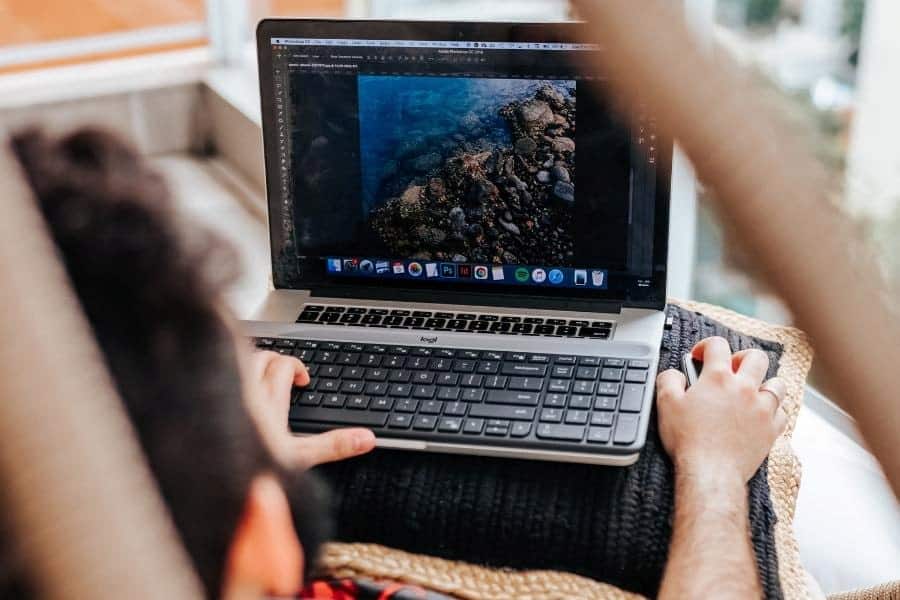
As an Amazon Associate we earn from qualifying purchases.
Whether you are shooting real estate exterior or interior photos, there are chances you won’t capture the best exposure, and you will need to improve the photos using a photo-editing application. The following Lightroom vs Snapseed guide will help you determine which application suits your device and editing needs.
Quick Navigation
Both Lightroom and Snapseed are versatile photo manipulation applications that can edit both the processed JPEGs and unprocessed RAW images. The two applications are flexible, and you can install them on your mobile device and edit your photos on the go.

Adobe Lighroom is an advanced application that allows you to edit and organize a large collection of photos. It’s developed and owned by Adobe and was initially released in 2017. The application is also a part of the Adobe Creative Cloud and integrates well with other Adobe products, such as Adobe Photoshop.
This means you will also need to have an Adobe account and licensing to use Lightroom. The software is compatible with a wide range of devices and platforms, from macOS, Windows, Apple TV, Android, and iOS.
Snapseed is an editing software initially released by Nik Software as a photo-editing application for iPad in June 2011. The application was then advanced to support iPhones by August 2011 and later to support Microsoft Windows by February 27, 2012.
However, the desktop version was discontinued after Google took over, and currently, the application is only supported by Android and iOS platforms. That means you will need to use an Android emulator if you want to run the application on a Windows platform.
Although the two applications can suit both professionals and beginners, understanding the following variations between the two applications will help you know their strengths and weaknesses and which one will suit your mobile device, skill level, and workflow expectations.
Keeping in mind that the two applications can run on mobile platforms right from opening images to exporting them, they have the following design, filter, and editing similarities.
Keeping in mind that the two applications are developed and owned by different companies, they have the following differences in their usability, photo manipulation capability, RAW file processing, organizational features, and compatibility.
The user interface is where you will interact and communicate with the application. A complicated user interface makes the application have a steeper learning curve. Although Snapseed only allows you to open and edit one image at a time, the user interface is straightforward.
Typically, you will have three options tabs at the bottom of the interface, consisting of Styles, Tools, and Export. Usually, you will only use these tabs from opening the image, editing to exporting. Additionally, the Styles tab contains templates for most of the editing needs.
On the other hand, the Lightroom interface is not user-friendly, from the opening of photos to the arrangement of tools and features. For instance, you will need to import a photo in Lightroom rather than opening it directly. Some advanced features, such as the camera app, also make the interface confusing to beginners.
The application's photo-editing features are one of the main aspects to consider, especially when you want to carry out extensive edits, such as creating HDRs or changing the color gradients. Although both applications come with advanced image manipulation features, Lightroom comes with some features that Snapseed lacks, and vice versa.

For instance, Lightroom comes with the Hue, Saturation, and Luminance feature that helps you to adjust the intensity, gradient, and luminance of the color. Typically, this feature allows you to separately edit each image color.
On the other hand, Snapseed comes with HDR and double exposure features, which allow you to match the exposures of different images and merge multiple photos into a single HDR image. However, even with these variations, Lightroom has more sophisticated features and plugins than Snapseed.
When choosing a photo-editing application, it's important to consider the devices and platforms that support the application. Snapseed is only supported by mobile platforms such as Android and iOS for mac users. This limits you from carrying out all your edits from a mobile device.
On the other hand, Lightroom is versatile, and you can run it on mobile devices, Windows PCs, and macs. That means you can transfer your photos from your mobile device to your computer and vice versa without losing your edits.
Typically, this gives Lightroom an edge, especially if you are a professional real estate photographer who wants to import, edit, organize and export a large collection of photos from a computer and still have control over the photos on the go from a mobile device.
RAW files refer to the unprocessed image data captured by the camera sensor. Although both applications can edit RAW files, they use different engines, so their processing results.
Generally, Snapseed tends to lose more details than Lightroom when correcting overexposure and underexposure issues. Also, Snapseed is limited to outputting JPEG image formats after processing, while Lightroom can output JPEGs and other formats such as TIFF, PPM, PFM, and PNG.
Layers are like a stack of different images that allows you to edit an image without affecting the pixels of the image below or on top. Typically, layers allow you to work non-destructively and to view the edits separately.
Snapseed comes with the layers feature, allowing you to use it like Adobe Photoshop. On the other hand, Lightroom doesn't come with the layers feature. Mainly, it's because Adobe assumes you will export the images to Adobe Photoshop in case you want to use this feature.
The major distinguishing factor between Lightroom and Snapseed is the pricing plans. Keeping in mind that Lightroom is a part of the Adobe Creative Cloud, it's a paid software, and you will need an Adobe account and monthly or yearly subscriptions to use it.
Even with the free Lightroom mobile version, you will still need to pay around $5 per month to use features such as geometry, selective masking, and healing. However, if you have already paid for the Lightroom desktop version, all the mobile version features are unlocked. On the other hand, Snapseed is completely free to use.

The advanced features in Lightroom make it the best choice for professional real estate photographers who want to individually adjust the different colors' saturation, gradient, and luminance. It’s also the best choice if you want to export photos to another Adobe software such as Photoshop for further editing.
The ease of use makes Snapseed the best application for beginners who might not be familiar with the complicated Lightroom interface. It’s also the best application for photographers on a tight budget, as you can use all the features for free.
Generally, Snapseed is better for beginners who are looking for a user-friendly and free photo-editing application. However, if you are a professional photographer who has already subscribed to Adobe cloud services, you can go for Lightroom due to its wider compatibility scope and advanced features.
Lightroom and Snapseed are advanced photo-editing apps that can process, edit RAW files, and export JPEG images using Android and iOS mobile platforms. With the above Lightroom vs Snapseed guide, you can determine which application will suit your budget and photo-editing requirements.
